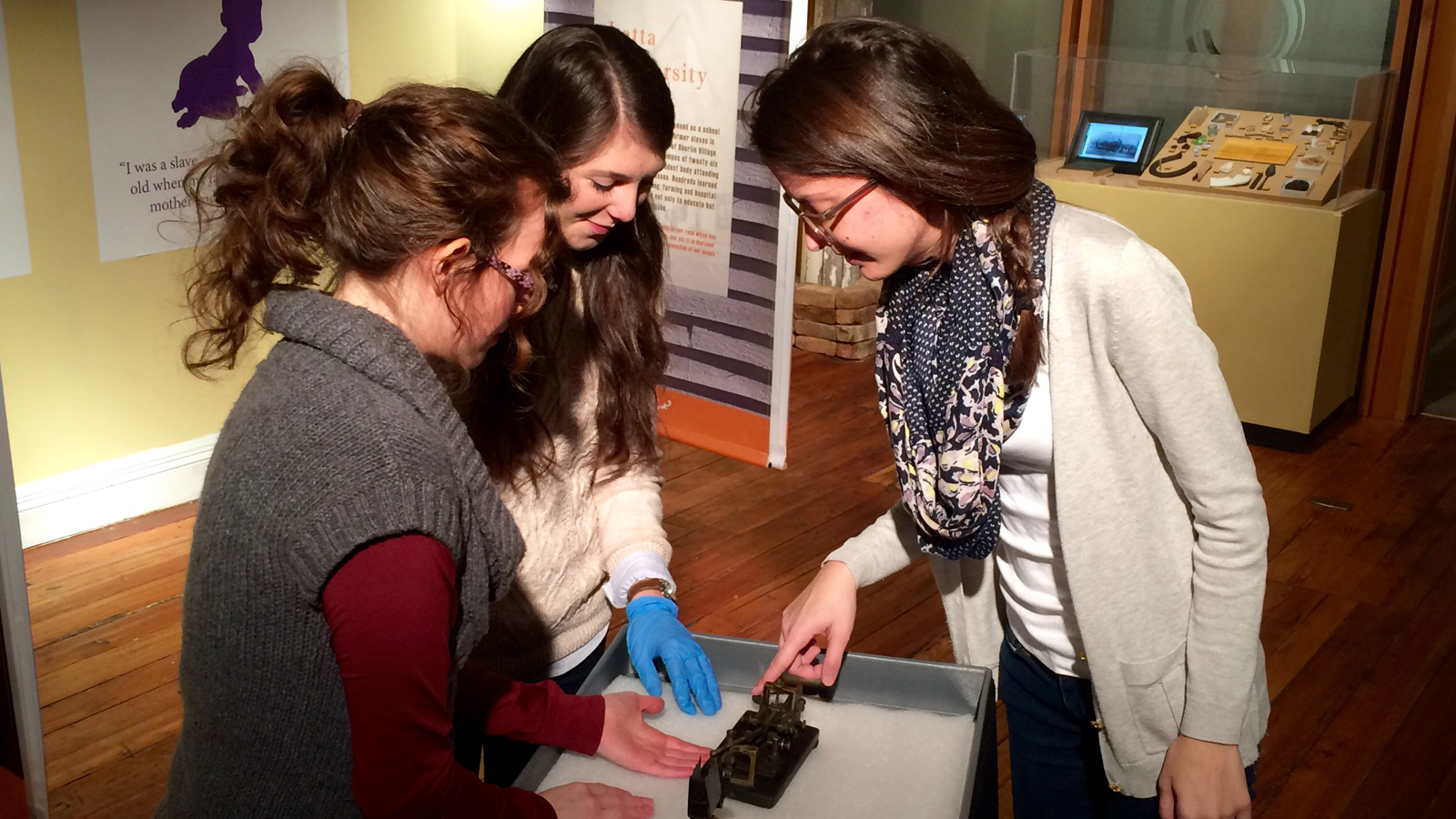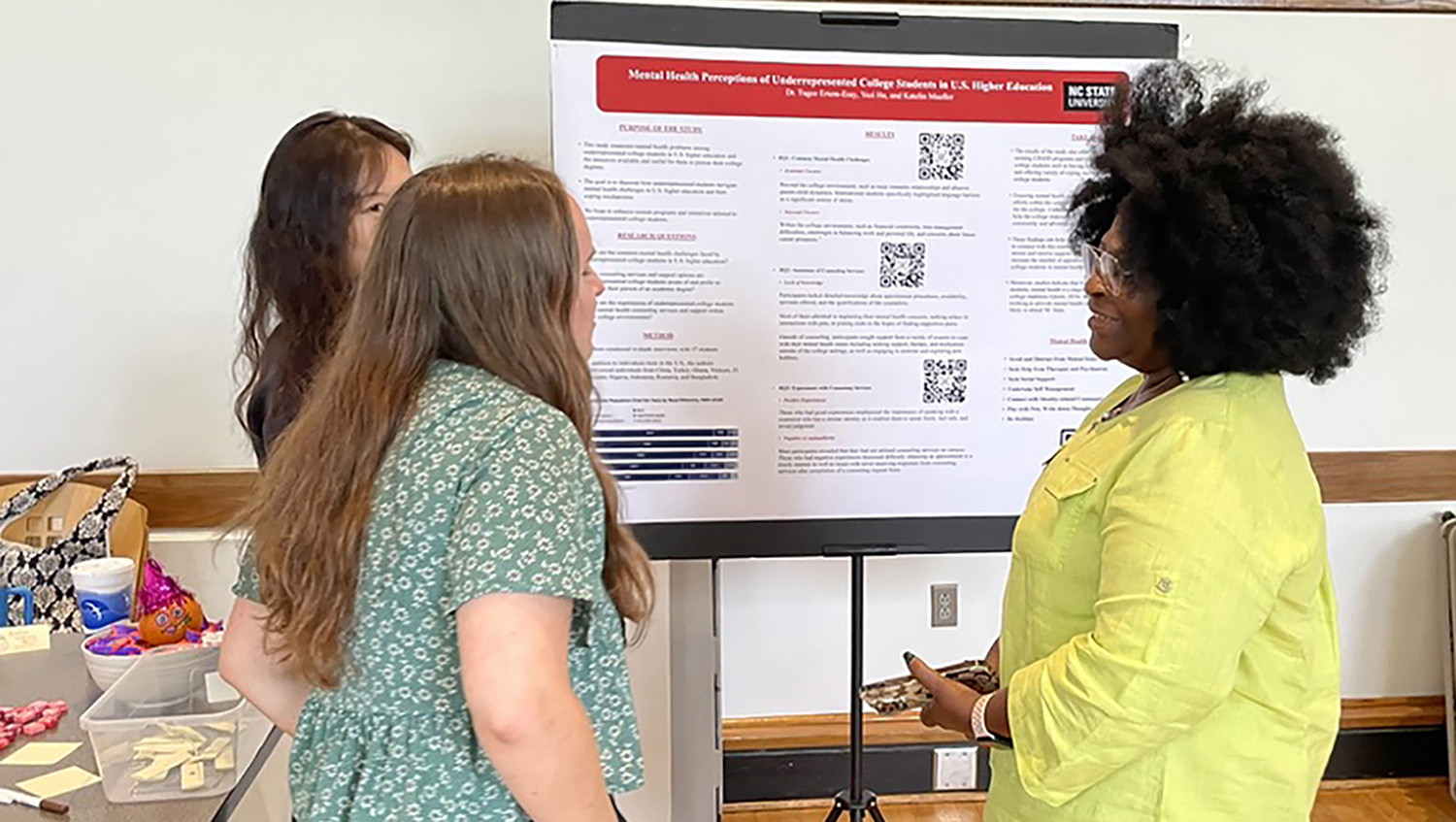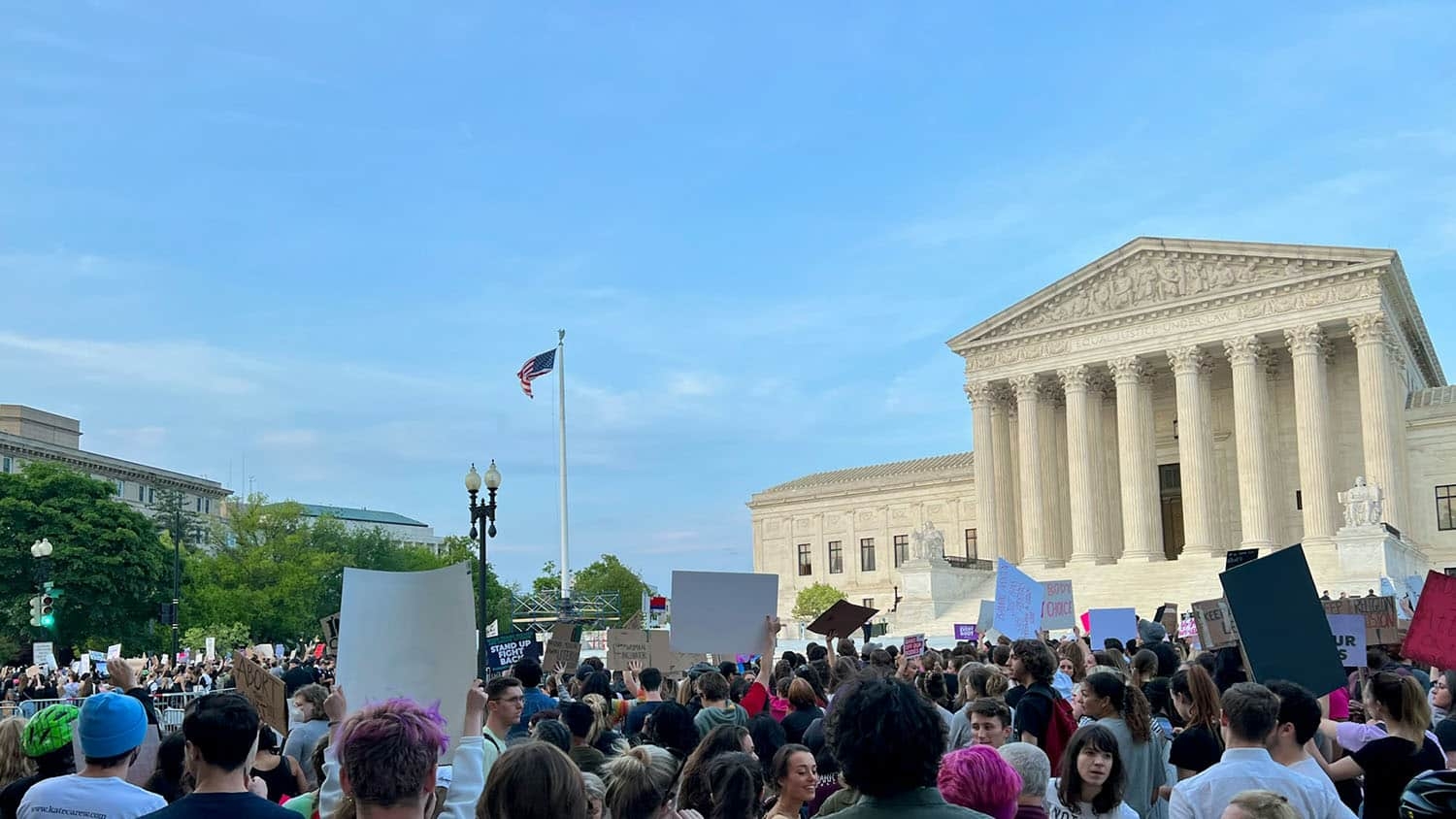Taking the Museum to the People

In Raleigh, the historic Pope House sits just outside the city’s bustling downtown core.
Foot traffic is hard to come by for the old home, which exists now as a public museum. It’s separated by a few blocks from clusters of other historic sites near downtown. The old neighborhood that once surrounded the house is gone.
Public history graduate students Sarah Soleim and Abigail Jones have seen the challenge of attracting visitors to the Pope House Museum firsthand. They worked at the house in the summer of 2015 during internships with the City of Raleigh Museum, the home’s current owner. So as a way to increase public engagement, they worked with museum staff to brainstorm ways to bring the Pope House to the people.
One idea was to create a mobile museum cart that focused on twentieth-century medicine, a nod to the Pope House’s owner Manassa T. Pope. He was a physician who, after a notable run for public office, became the only African-American man to run for mayor of a Southern capital during the Jim Crow Era.
Soleim, a Ph.D. student in public history, developed a program for the museum cart. Jones, who is pursuing a master’s degree, helped collect artifacts for the mobile display.
While the cart is still being developed today, Soleim and Jones tested out their idea by conducting research on an existing museum cart in Raleigh. They recently presented findings from their study at the 2016 NC State Graduate Student Research Symposium, where they won second place in the category of best humanities poster. They also presented their work at the National Council on Public History and the Society for History in the Federal Government meeting in Baltimore.
We caught up with Soleim and Jones to talk about their work and what’s next for the project.

Q: What led you to study the Pope House and the City of Raleigh Museum’s museum cart?
Jones: During our internships, we spent a lot of our time at the Pope House, where we inventoried, organized and rehoused many of the artifacts. Although the Pope House was operated as a private museum before the City of Raleigh took it over, a lot of the work is very similar to what it would be like to start a museum, beginning with inventorying and cataloging all of the objects in the house.
That work required us to think about the place of historic house museums in public perception and the ways that people engage with historic house museums.
Q: What were the main questions you asked for this research?
Jones: Most broadly, our research is informed by the current debate about the future of historic house museums. Historic house museums struggle to appear as unique and engaging to visitors who often perceive them as antiquated, stuffy, and unwelcoming.
More specifically, the Pope House Museum struggles to attract visitors because of its inconvenient location — it is located several blocks away from the City of Raleigh Museum and other museums and historic sites along Fayetteville Street. In addition, the original neighborhood that the house was located in is completely destroyed, so its original context is essentially lost. Combining these two challenges inspired us to think about ways that we could take the story of the Pope family outside of the home and into other community spaces.
Our main question was, “If and when the museum acquires the artifacts necessary for the twentieth-century medicine cart, what can we do to make sure that it is successful?”
As a result, we decided to “test” an already-existing museum cart — the History Mystery cart — to see how people responded to the display when it was presented at different times and in different environments.
Q: How did you collect your data?
Soleim: Our data is qualitative. We considered how many visitors approached the cart. However, as educators, we also have to measure the success of the experience. We were interested in how visitors interacted with the objects and with us, as docents. This meant that we had to consider the objects they showed the most or least interest in, the questions visitors asked us and how likely the visitors might be to visit the museum.

Q: What did you find?
Soleim: If visitors approached the cart, the experience was almost always successful. The objects served as an icebreaker and allowed visitors to open up to us. However, when we tested the cart on Fayetteville Street, it was very difficult to draw in visitors. We think this had to do with the lack of signage or branding on the cart, so the museum is now adding a logo that clearly marks the cart’s affiliation with the City of Raleigh Museum.
We also had more success when there were already scheduled events downtown because foot traffic was heavier. Events like First Friday or the farmer’s market will be key to the success of the museum cart. We also tested the cart during the winter when people are less likely to be walking downtown, so our hope is to try it again this spring when the weather is warmer.
Q: What do these findings mean, specifically for museums or historic homes seeking to better engage the public?
Jones: We hope that our research will bring a tangible benefit to the museum community. We think that our findings can be easily replicated by other museums. And, as evidenced by our experience at the National Council of Public History meeting, there are a lot of museum professionals who were interested in the museum cart.
We think the museum cart is a great idea for smaller institutions, because it is relatively low cost, low maintenance and can be operated by volunteers. These three aspects are important for smaller museums that struggle with resources, staff and funding.
The idea behind the museum cart is that it engages people in a way that historic house museums typically do not. First, it is a mobile cart (wheels and all!), which enables the story of the Pope family to move outside of the traditional structure (their home) and into other important community spaces. Second, the artifacts in the cart are all part of the museum’s teaching collection, which means that visitors can touch and pick up the objects. This enables them to interact with historic artifacts in ways that are typically unavailable and also makes history more tangible and relatable.

Q: How have professors or your experiences at NC State helped prepare you for research like this?
Jones: I think that this project is reflective of our experiences in the Public History program at NC State. On one hand, our research engages in current scholarship within the public history field and focuses on theories of community engagement and museum education. On the other hand, however, our research is very practical.
We really wanted it to specifically benefit smaller museums that are constrained by funding and resources. The project combined our internship experiences with research and coursework at NC State. That collision of theory and practice is something that is important to us as public history students and is also a necessary part of effective public history scholarship.
We would like to thank Dr. Susanna Lee and Dr. Tammy Gordon for their constructive feedback, as well as Dr. David Zonderman, the NC State Department of History and Ernest Dollar and Kimberly Floyd of the City of Raleigh Museum for their support of our research.
Q: What’s next for both of you after grad school?
Jones: I am graduating in May and hope to find work within the museum field. I am interested in working in local history museums that focus on community engagement and education.
Soleim: After completing my doctoral degree, I hope to work with a historical society, museum or university where I can continue to test new ways of engaging communities.


